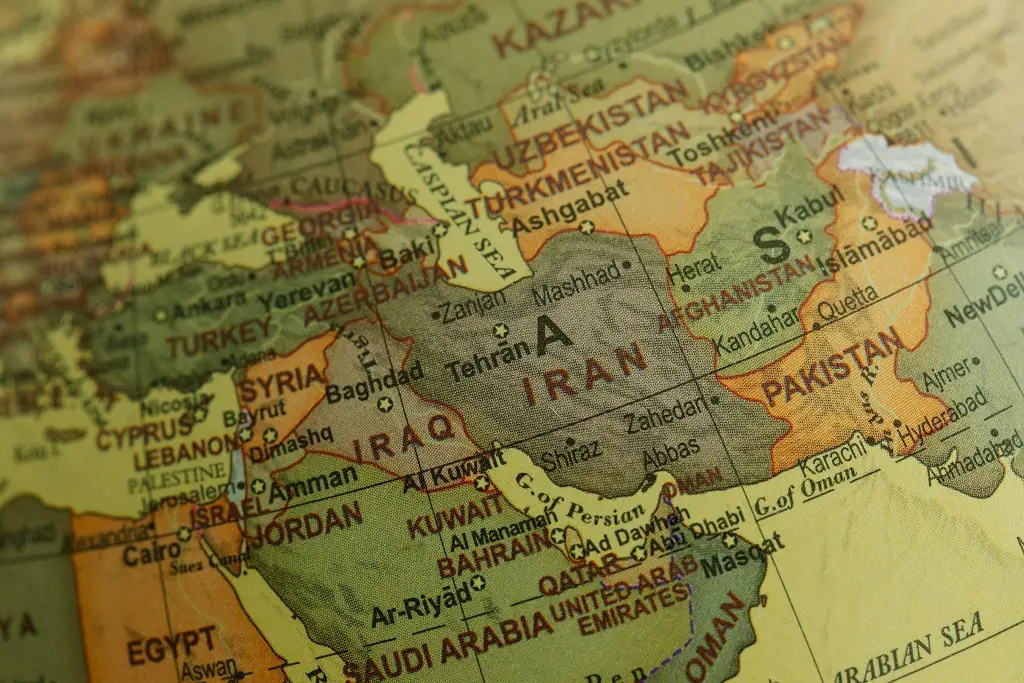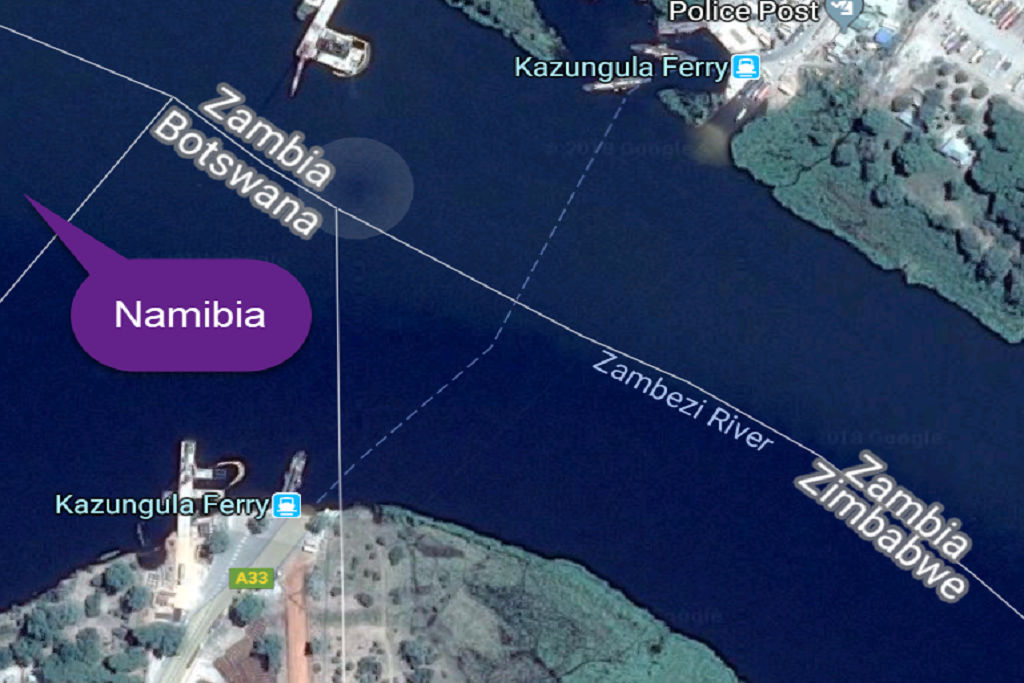Exploring The World’s Most Bizarre Borders
Borders Are A Fundamental Aspect Of International Relations, Demarcating The Territorial Limits Of Different Nations And Shaping The Political, Cultural, And Economic Landscape Of The World.
However, Some Borders Stand Out As Being Particularly Unusual Or Bizarre.
These Borders Often Result From Historical Accidents, Geopolitical Maneuvers, Or Legal Quirks, And Can Be The Source Of Confusion, Intrigue, And Even Conflict.
Some Of The Most Bizarre Borders In The World Include Enclaves And Exclaves, Disputed Territories, And De Facto Borders That Do Not Align With Official Boundaries.
These Borders Can Be Found On Every Continent And In Every Corner Of The Globe, And They Offer A Unique Window Into The Complexities Of International Relations And The Human Experience.

What Are The Strangest Borders In The World?
There Are Many Borders Around The World That Are Considered Strange For Various Reasons. Some Examples Include:
The Border Between The Us And Canada:
The Border Between The United States And Canada Is The Longest International Border In The World, Stretching Over 8,891 Km (5,525 Miles) From The Atlantic Ocean To The Pacific Ocean.
It Separates The Two Countries, And It Is Also The Longest Undefended Border In The World.
The Border Is Marked By Boundary Markers, Monuments, And Boundary Signs. The Boundary Markers Are Placed Along The Land Border Every 1.6 Km (1 Mile) And Every 3.2 Km (2 Miles) Along The Water Border.
The Boundary Markers Are Placed At The Exact Location Of The Border And Are Used To Define The Boundary.
The Border Is Also Patrolled By The Royal Canadian Mounted Police And The U.s. Border Patrol To Prevent Illegal Activities Such As Smuggling And Illegal Immigration.
The Border Is Also Known For The Ambassador Bridge, Peace Bridge, And The Blue Water Bridge, Which Connect The Two Countries By Road And Rail.
The Border Is Also Known For The Great Lakes Which Forms A Natural Border Between The Two Countries. And Also The Niagara Falls Which Bisects The Border And Creates A Situation Where The American And Canadian Sides Of The Falls Are In Two Different Countries.
The Border Between The Us And Canada Is Generally Friendly And Open, With Many People Crossing It Regularly For Business, Tourism, And Other Reasons.
However, In Recent Years, Security Measures Have Been Increased Due To Concerns About Te
The Border Between The Us And Mexico:
The Border Between The United States And Mexico Is The Second-longest International Border In The World, Stretching Over 3,145 Km (1,952 Miles) From The Gulf Of Mexico To The Pacific Ocean.
The Border Separates The Two Countries And Is A Major Point Of Entry And Exit For People, Goods, And Services.
The Border Is Marked By A Variety Of Physical Barriers, Including Fences, Walls, And Natural Barriers Such As Rivers And Deserts.
The United States Has Built A Number Of Barriers Along The Border In Recent Years To Try To Curb Illegal Immigration And Drug Trafficking.
The Border Is Also Patrolled By The U.s. Border Patrol And The Mexican Federal Police To Prevent Illegal Activities.
The U.s. Border Patrol Is Responsible For Enforcing Immigration Laws And Preventing The Illegal Entry Of People And Goods Into The United States.
The Mexican Federal Police Are Responsible For Enforcing The Laws Of Mexico And Preventing The Illegal Entry Of People And Goods Into Mexico.
The Border Is Known For The Many Official Ports Of Entry, Including Bridges, Tunnels, And Airports, That Are Used By People, Vehicles, And Goods To Cross The Border.
The Most Famous Of These Is The San Ysidro Port Of Entry, Located Between San Diego And Tijuana, Which Is The Busiest Land-border Crossing In The World.
The Border Between The Us And Mexico Is Known For The Cultural And Economic Ties That Exist Between The Two Countries.
Many People, Particularly In The Southwestern Us, Have Family And Business Connections Across The Border.
However, In Recent Years The Relation Has Been Tense Due To The Immigration Policies And Trade Tariffs Imposed By The Us Government.
The Border Between Chile And Argentina:
The Border Between Chile And Argentina Is A Long, Mountainous Frontier That Runs Along The Andes Mountain Range.
The Border Stretches For Over 5,000 Km (3,100 Miles) And Is One Of The Highest And Most Remote International Borders In The World.
The Border Is Marked By A Series Of Natural Landmarks Such As Mountains, Rivers, And Lakes, As Well As Man-made Markers Such As Boundary Stones And Monuments.
The Highest Point Of The Border Is The Aconcagua Mountain, Which Is The Highest Peak In The Western Hemisphere And Stands At 6,959 Meters (22,831 Feet) Tall.
The Border Area Is Known For Its Harsh And Remote Terrain, With Rugged Mountains, Deep Valleys, And Glaciers.
The Climate Is Also Challenging, With Strong Winds, Heavy Snowfall, And Extreme Cold Temperatures.
The Border Is Also Known For Its Rich Natural Resources, Including Minerals, Forests, And Hydroelectric Power.
Both Chile And Argentina Have Invested In Infrastructure, Such As Roads And Bridges, To Improve Access To These Resources. The Border Is Generally Peaceful And Both Chile And Argentina Have A Long History Of Cooperation And Friendship.
However, There Have Been Some Disputes Over The Border In The Past, Particularly Over Access To Natural Resources And Water Rights. Both Countries Have Agreed To Settle Any Disputes Through Peaceful Means And Have A Good Relation Today.
The Border Region Is Also A Popular Destination For Tourists, Who Come To Experience The Natural Beauty Of The Andes, Including The Famous Aconcagua And The Patagonian Ice Field.
The Border Between The Czech Republic And Germany:
The Border Between The Czech Republic And Germany Is A Relatively Short Border, Stretching For Around 815 Km (506 Miles).
It Is Located In Central Europe And Runs Through A Variety Of Landscapes, Including Forests, Hills, And Rivers.
The Border Is Marked By A Series Of Boundary Markers, Monuments, And Boundary Signs. The Boundary Markers Are Placed At The Exact Location Of The Border And Are Used To Define The Boundary.
There Are Also A Number Of Border Crossing Points, Such As Roads, Bridges, And Railways, That Are Used By People, Vehicles, And Goods To Cross The Border. One Unique Feature Of This Border Is The Town Of Asch, Which Is Bisected By The Border.
The Town Is Divided Between The Czech Republic And Germany, And Residents Have To Cross The Border Multiple Times A Day To Go To Work Or School.
The Border Runs Through The Center Of The Town, And It Is Marked By A Line Of Cobblestones.
The Border Between The Czech Republic And Germany Is Generally Considered To Be Friendly And Open, With Many People Crossing It Regularly For Business, Tourism, And Other Reasons.
However, In The Past, During The Cold War, The Border Was Heavily Guarded And Fortified As It Was Part Of The Iron Curtain.
The Border Region Is Also Known For Its Rich Cultural Heritage And History, With Many Towns And Cities That Have A Unique Blend Of Czech And German Culture.
Today, The Border Region Is A Popular Destination For Tourists, Who Come To Experience The Natural Beauty And Cultural Heritage Of Both Countries.
The Border Between Spain And Portugal:
The Border Between Spain And Portugal Is One Of The Oldest International Borders In Europe, With A History Dating Back To The Middle Ages.
The Border Stretches For 1,214 Km (754 Miles) And Runs Through A Variety Of Landscapes, Including Mountains, Forests, And Rivers.
The Boundary Markers Are Placed At The Exact Location Of The Border And Are Used To Define The Boundary.
There Are Also A Number Of Border Crossing Points, Such As Roads, Bridges, And Railways, That Are Used By People, Vehicles, And Goods To Cross The Border.
One Unique Feature Of This Border Is The Town Of Olivença, Which Is Claimed By Both Spain And Portugal.
The Town Has Been A Subject Of Dispute Between The Two Countries For Many Years.
The Border Runs Through The Center Of The Town And It Is Marked By A Line Of Cobblestones.
The Border Between Spain And Portugal Is Generally Considered To Be Friendly And Open, With Many People Crossing It Regularly For Business, Tourism, And Other Reasons.
The Border Region Is Also Known For Its Rich Cultural Heritage And History, With Many Towns And Cities That Have A Unique Blend Of Spanish And Portuguese Culture.
Today, The Border Region Is A Popular Destination For Tourists, Who Come To Experience The Natural Beauty And Cultural Heritage Of Both Countries.
The Border Region Is Also Known For Its Beautiful Landscapes, For Example, The Guadiana River That Borders Both Countries, The Natural Park Of The International Douro, And The National Park Of Monfragüe.
The Border Between Bhutan And China:
The Border Between Bhutan And China Is An Undefined, Open Border, Which Means That There Is No Physical Barrier Between The Two Countries.
The Border Stretches For Approximately 470 Km (290 Miles) And Runs Through The Himalayan Mountain Range.
The Border Is Not Clearly Demarcated And Is Marked Only By A Few Boundary Markers And Monuments.
The Two Countries Have Not Yet Agreed On A Formal Border, And There Have Been Disputes Over The Border In The Past. Bhutan And China Have Had A Long History Of Peaceful Coexistence, But In Recent Years There Have Been Disputes Over The Border, Particularly In The Doklam Plateau.
This Area Is A Small Piece Of Land, Located In The Himalayas, That Is Disputed By Bhutan And China. In 2017, There Was A Standoff Between The Chinese And Indian Armies In The Area, Which Was Resolved After Two Months Of Diplomatic Efforts.
The Border Region Is Known For Its Natural Beauty, Including The Himalayan Mountain Range, Which Is Home To Mount Everest, The Highest Peak In The World.
The Region Is Also Known For Its Rich Biodiversity And Is Home To Many Endangered Species.
The Border Between Costa Rica And Panama:
The Border Between Costa Rica And Panama Is A Land Border That Runs For Approximately 635 Kilometers (395 Miles) Along The Northern And Northwestern Regions Of Costa Rica And The Southern And Southwestern Regions Of Panama.
The Border Is Primarily Defined By The Sixaola River, Which Flows From Costa Rica Into Panama, And The Rio Teribe, Which Flows From Panama Into Costa Rica.
The Border Is Open 24/7 And Both Countries Have Border Crossing Points For People And Vehicles.in Addition To The Sixaola River And The Rio Teribe, Other Geographical Features That Mark The Border Between Costa Rica And Panama Include The Cordillera De Talamanca Mountain Range, Which Runs Along The Eastern Section Of The Border, And The Pacific Ocean, Which Forms The Western Boundary.
The Border Between The Two Countries Has A Long History, Dating Back To The 19th Century When Both Countries Were Part Of The Spanish Empire.
In 1821, Costa Rica Gained Independence From Spain And Later, In 1903, Panama Declared Its Independence.
The Border Was Officially Demarcated In 1940 With The Signing Of The Treaty Of Limits Between The Two Countries.
However, The Border Has Not Been Without Dispute.
In The Past, There Were Several Disputes Over Territory And The Exact Location Of The Border, But These Have Been Largely Resolved Through Diplomatic Negotiations.
The Border Is Now Considered To Be Relatively Stable, With Both Countries Committed To Maintaining Peaceful Relations And Cooperation.
In Recent Years, Costa Rica And Panama Have Also Cooperated In A Number Of Areas, Including Trade, Tourism And Environmental Conservation.
Many People Travel Across The Border For Tourism, Business And Other Purposes.
These Are Just A Few Examples, There Are Many Other Borders Around The World That Are Considered Strange Or Unique.
EXCEllent